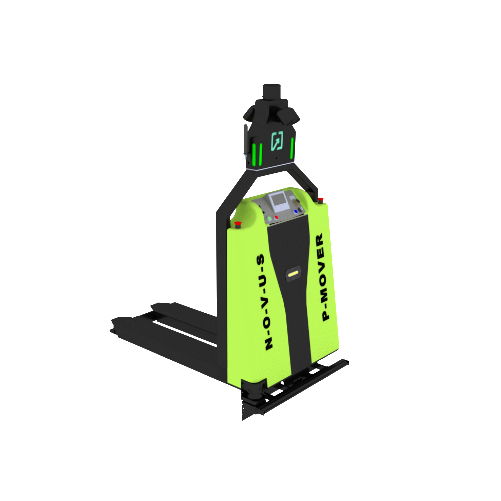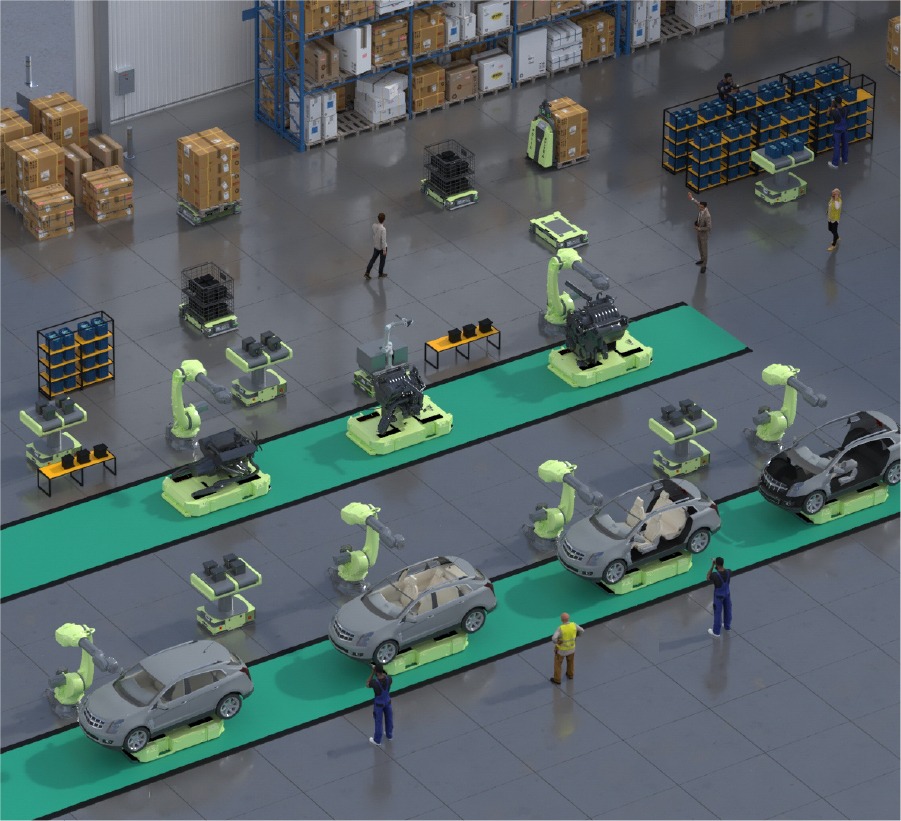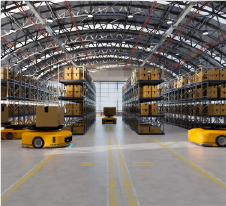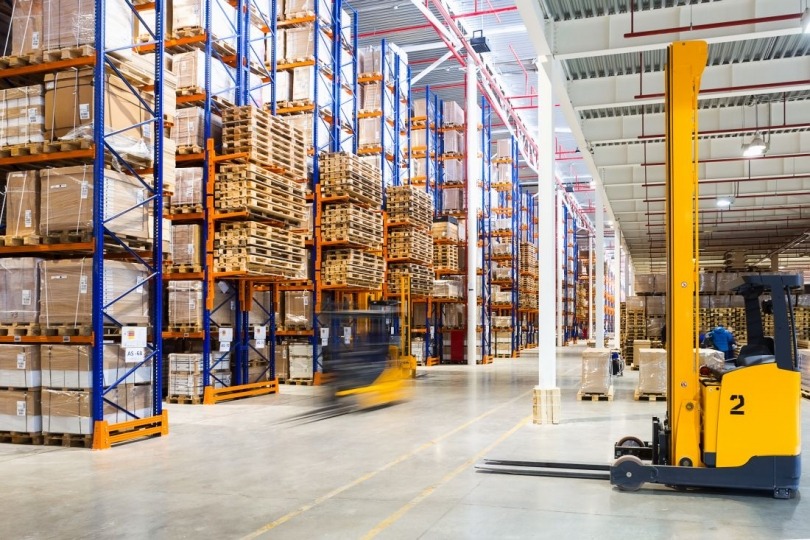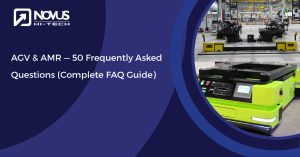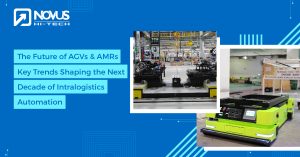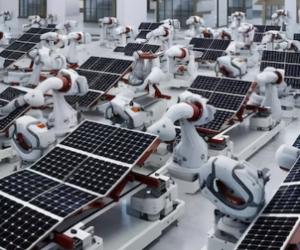Material handling equipment is tools and machinery used to move, store, protect, and control materials and products throughout the manufacturing, distribution, consumption, and disposal stages. Material handling equipment is crucial for various industries, including manufacturing, warehousing, construction, and logistics.
Among the diverse types of material handling equipment, devices like pallet trucks play a significant role in streamlining the movement of heavy loads over short distances, especially in warehouses and distribution centers. This equipment not only enhances efficiency and productivity but also contributes to workplace safety and cost-effectiveness.
Types of Material Handling Equipment
-
Storage and Handling Equipment
Storage and handling equipment are tools that help store and organize stuff in a building. They include things like shelves, racks, bins, and pallets. When companies use the right storage equipment for their materials, they can save space and make it easy to find things.
Shelves are like tall cupboards that help store things vertically, so you can use up all the space in a warehouse. Racks and bins help organize materials by size, weight, and other things, so it’s easy to get them when you need them. Pallets are used for stacking and moving goods around, making it easy for big machines like forklifts to handle them.
-
Bulk Material Handling Equipment
Bulk material handling equipment is essential for industries dealing with large quantities of materials in bulk form. This equipment facilitates the transportation and storage of materials such as grains and coal.
Conveyors are versatile systems that transport materials horizontally, vertically, or at inclines. They are widely used in industries such as mining, agriculture, and manufacturing for the continuous movement of bulk materials. Bucket elevators are employed for vertically lifting materials in a controlled manner, typically in facilities with limited floor space.
-
Industrial Transport Vehicles
Industrial transport vehicles are really important for moving stuff around in places like factories or warehouses. They help by doing the heavy lifting instead of people, which makes things faster and easier. Forklifts, pallet jacks, and trolleys are some examples of these vehicles.
Forklifts are like big machines that can lift and carry stuff using forks or special attachments. They’re used a lot in places where goods need to be loaded, unloaded, or stacked, like warehouses or factories. Pallet jacks, also called pallet trucks, are vehicles, either pushed manually or powered by electricity, used for moving things that are stacked on pallets. Trolleys are like carts that can move around, making it easy to carry things from one place to another inside a building.
-
Advanced Engineering Systems for Material Handling
Advanced engineering systems leverage cutting-edge technology to automate and streamline material handling processes. These systems incorporate robotics, automation, and intelligent control systems to enhance efficiency, accuracy, and safety. Automated guided vehicles (AGVs) & robotic arms with integrated sensors are examples of advanced engineering systems.
AGVs are like smart vehicles that can move stuff around a place all by themselves. They have sensors and special software that help them move carefully and avoid bumping into things. This makes work faster and safer. Robotic arms are used for jobs like picking things up, packing them, or stacking them neatly. This means less work for people and more things done quickly. Conveyor systems, which are like moving belts, also use sensors to keep track of things moving along them in real time. This helps to control and improve how things are moved around.
-
Identification and Control Equipment
Identification and control equipment plays a crucial role in tracking, monitoring, and managing materials throughout the supply chain. This equipment facilitates inventory management, order fulfillment, and quality control processes. Barcoding systems, RFID tags, and inventory management software are examples of identification and control equipment.
Barcoding systems use barcode labels to uniquely identify and track individual items. RFID tags utilize radio frequency technology to wirelessly transmit information about tagged items, enabling real-time visibility and tracking. Inventory management software provides comprehensive tools for managing inventory levels, tracking stock movements, and generating reports for analysis and decision-making.
Discover how Material Handling Equipment optimizes workflow and productivity.
Download our free brochure for expert insights and trends!
Advantages of Material Handling Equipment
Material handling equipment offers numerous advantages over manual material handling methods, making them indispensable for modern industrial operations.
Cost-effective: Investing in material handling equipment can lead to long-term cost savings by reducing labor costs, minimizing product damage, and optimizing operational efficiency.
Adaptable: Material handling equipment can be customized and adapted to suit specific industry requirements, providing flexibility and versatility in handling various types of materials.
Compact: Many material handling equipment are designed to occupy minimal space, allowing for efficient use of floor space in crowded facilities. Compact designs help maximize storage capacity while maintaining accessibility to materials.
Efficient: Material handling equipment automates repetitive tasks, leading to faster material movement and higher productivity. By reducing manual handling, this equipment minimizes the risk of workplace injuries and enhances overall efficiency.
Compared to manual material handling methods, which are labor-intensive and prone to errors and injuries, material handling equipment offers significant advantages in terms of efficiency, safety, and cost-effectiveness.
The Evolution of Material Handling Practices
Over time, the way we move stuff around has changed a lot. It’s been driven by new technology, different needs from industries, and wanting to do things faster and better.
Way back, people used their hands a lot to move things. They’d lift, carry, and stack stuff by themselves. But this was slow, hard work, and sometimes mistakes happened, leading to injuries.
Then, during the Industrial Revolution, things got a lot more mechanical. We started using machines like carts, pulleys, and conveyor belts to move stuff around. This made things much quicker and smoother, helping businesses make more money.
As we got better at using electricity and hydraulic power, our machines got even fancier. We made things like forklifts and pallet jacks to do the heavy lifting for us. This made work easier for people and made businesses run more smoothly.
Nowadays, we’re all about automation and robots. We have machines like AGVs (which are like robot carts), robotic arms, and conveyor belts that can do things on their own. Even traditional equipment like pallet jacks plays a key role, often working alongside automated systems to move materials efficiently in areas where full automation may not be feasible. This blend of automation and manual tools makes moving stuff around really precise, fast, and reliable.
And we’re not done yet! We’re still making improvements. We’re adding smart sensors, using fancy software, and connecting everything to the internet. This makes material handling even more efficient, productive, and good for the environment.
Conclusion
Material handling equipment is really important for businesses nowadays. It helps them do things like storing and moving stuff safely and efficiently. This equipment makes sure that materials get where they need to go without any problems.
When companies use this equipment, it helps them save money and do their work better. They can store things neatly, make their production process smoother, and deliver goods on time. Overall, using material handling equipment helps businesses run smoothly and be successful.
As technology keeps getting better and industries change, material-handling equipment will become even more important. Businesses that keep up with the latest technology and use new ideas will have a better chance of doing well in a competitive world.


